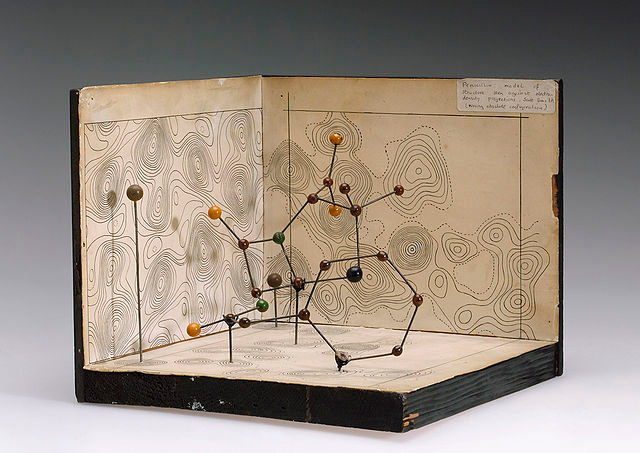Dorothy Hodgkin's 104th birthday Doodle on Google.ie homepage
Nobel Prize-winning British biochemist Dorothy Hodgkin has been honoured with a Google Doodle celebrating what would have been her 104th birthday. Hodgkin is credited with the development of protein crystallography and the use of X-rays to determine 3D structures of biomolecules.
Hodgkin (née Crowfoot) made a significant contribution in advancing the technique of X-ray crystallography, which she used to confirm the structure of penicillin – the molecule illustrated in today’s stylised logo on the Google homepage – in 1945.
Born in Egypt on 12 May 1910, Hodgkin’s parents were both archaeologists who returned to England for only a few months each year. Her mother is said to have fostered Hodgkin’s interest in science at an early age and, at 18, she began studying chemistry at Somerville College, Oxford, a University of Oxford college for women only.
Hodgkin later became Somerville College’s first fellow and tutor in chemistry in 1936 and her students included future UK prime minister Margaret Thatcher, who had Hodgkin’s portrait hung at 10 Downing Street.
.jpg)
Dorothy Hodgkin
Influential discoveries
In 1964, Hodgkin became the third woman to receive the Nobel Prize in Chemistry for her analysis of the structure of vitamin B12.
Hodgkin used an early predecessor to the modern computer to analyse patterns cast by reflected X-rays. The same year that she and her colleagues used this technique to demonstrate that penicillin contains a β-lactam ring, Hodgkin published the first three-dimensional biomolecular structure of the steroid cholesteryl iodide.
In 1934, she began researching the structure of the hormone insulin. At the time, X-ray crystallography was not capable of mapping such a highly complex molecule but, after 35 years of improvements led by Hodgkin and her colleagues, the structure of insulin was finally realised.
Hodgkin went on to co-operate with other laboratories on insulin research and travelled the world giving advice on this hormone and its importance in diabetes.
As well as the Nobel Prize, Hodgkin received the Order of Merit in 1965 (the second woman ever to do so, following Florence Nightingale) and was the first female recipient of the Copley Medal, an award given by the Royal Society of London for outstanding achievements in scientific research.
Hodgkin was also a fellow of the Royal Society, which established a Dorothy Hodgkin fellowship for early-career-stage researchers. She also appeared on two British stamps.
Hodgkin died from a cardiac stroke on 29 July 1994. She was 84 years old.

Molecular model of penicillin by Dorothy Hodgkin, c1945 (via Science Museum London/Science and Society Picture Library)
Women Invent Tomorrow is Silicon Republic’s campaign to champion the role of women in science, technology, engineering and maths. It has been running since March 2013, and is kindly supported by Accenture Ireland, Intel, the Irish Research Council, ESB, Twitter, CoderDojo and Science Foundation Ireland.